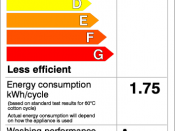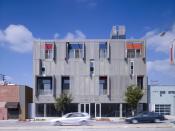Universities Consume Energy Like Mini-Cities
Colleges and universities are actually office buildings, restaurants, retail shops, multi-family dwellings, sports facilities, entertainment complexes, and schools rolled into one. Today, these mini-cities face severe budgetary challenges as they strive to operate, update, and replace aging, inefficient buildings. Enrollment is rising along with energy costs and student demand for energy-intensive amenities like air conditioning, high-speed Internet connections, and voice mail.
The Good News?
Many universities are realizing they can reduce operating costs and improve the campus environment by making energy-efficient building improvements. The greatest potential for energy savings comes from improvements in building controls. Some buildings burn the midnight oil, but most don't. Central monitoring controls can regulate off-hour lighting, heating, and cooling across the entire campus.
Efficient lighting and dormitory appliances and equipment; improved heating, ventilation, and air conditioning systems; and increased use of daylighting are some other measures that can add up to energy savings of more than 30%.
Many universities target their most inefficient systems first, then use the energy savings to fund additional capital improvements.
Centralized Controls
Centralized building controls or building automation systems can be used to automatically turn on, turn off, or dim electric lights around a building. In the morning, the centralized control system can be used to turn on the lights before employees arrive. During the day, a central control system can be used to dim the lights during periods of high power demand. And, at the end of the day, the lights can be turned off automatically. A centralized lighting control system can significantly reduce energy use in buildings where lights are left on when not needed.
Ways to Save
*Reduce energy costs by installing centralized control systems to control off-hour heating, cooling, and lighting across the campus
*Reduce lighting loads and improve comfort by...



Plagiarism detected
The paper is plagiarized from the following websites:
http://www.eere.energy.gov/buildings/i nfo/university/
http://www.esc.mtu.edu/WhatTheES CDoes/energyEfficiency/Default.htm
http://www.ee re.energy.gov/buildings/info/components/lighting/l ightingcontrols/centralizedcontrols.html
0 out of 0 people found this comment useful.